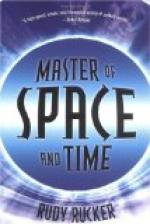The loss of the cable and of a year’s time—since another attempt could not be made until the next season—resulted in a total loss to the company of half a million dollars. Public realization of the magnitude of the task had been awakened by the failure of the first expedition and Field found it far from easy to raise additional capital. It was finally accomplished, however, and a new supply of cable was constructed.
Professor Thomson had been studying the problems of submarine telegraphy with growing enthusiasm, and had now arrived at the conclusion that the conductivity of the cable depended very largely upon the purity of the copper employed. He accordingly saw to it that in the construction of the new section all the wires were carefully tested and such as did not prove perfect were discarded. In the mean time the engineers were busy improving the paying-out machinery. They designed an automatic brake which would release the cable instantly upon the strain becoming too great. It was thus hoped to avoid a recurrence of the former accident. Chief-Engineer Bright also arranged a trial trip for the purpose of drilling the staff in their various duties.
The same vessels were provided to lay the cable on the second attempt and the fleet sailed in June of 1858, this time without celebration or public ceremony. On this occasion the recommendation of Chief-Engineer Bright was followed, and it was arranged that the Niagara and Agamemnon should meet in mid-ocean, there splice the cable together and proceed in opposite directions, laying the cable simultaneously. On this expedition Professor Thomson was to assume the real scientific leadership, Professor Morse, though he retained his position with the company, taking no active part.
The ships had not proceeded any great distance before they ran into a terrible gale. The Agamemnon had an especially difficult time of it, her great load of cable overbalancing the ship and threatening to break loose again and again and carry the great vessel and her precious cargo to the bottom. The storm continued for over a week, and when at last it had blown itself out the Agamemnon resembled a wreck and many of her crew had been seriously injured. But the cable had been saved and the expedition was enabled to proceed to the rendezvous. The Niagara, a larger ship, had weathered the storm without mishap.
The splice was effected on Saturday, the 26th, but before three miles had been laid the cable caught in the paying-out machinery on the Niagara and was broken off. Another splice was made that evening and the ships started again. The two vessels kept in communication with each other by telegraph as they proceeded, and anxious inquiries and many tests marked the progress of the work. When fifty miles were out, the cable parted again at some point between the vessels and they again sought the rendezvous in mid-Atlantic. Sufficient cable still remained




